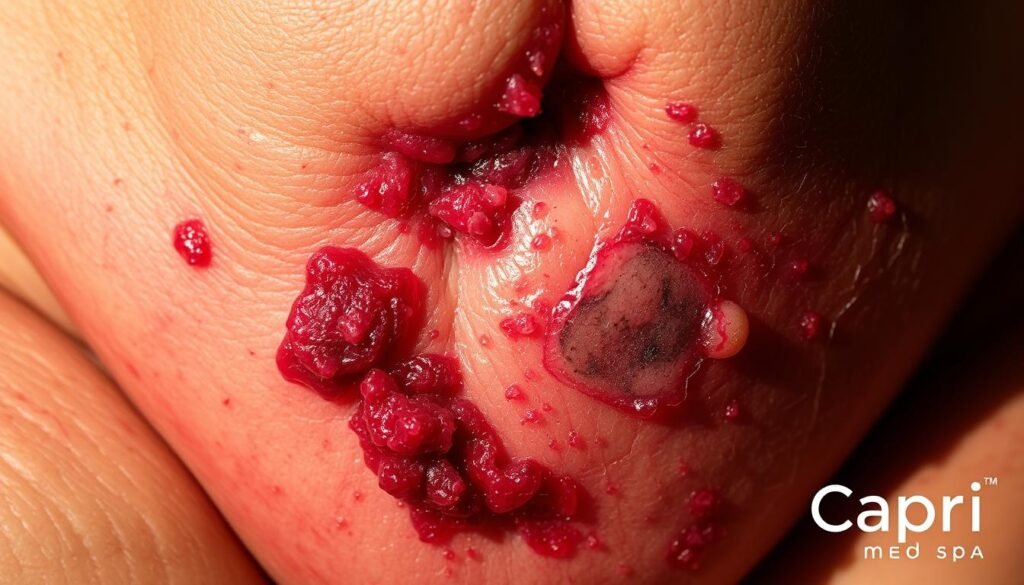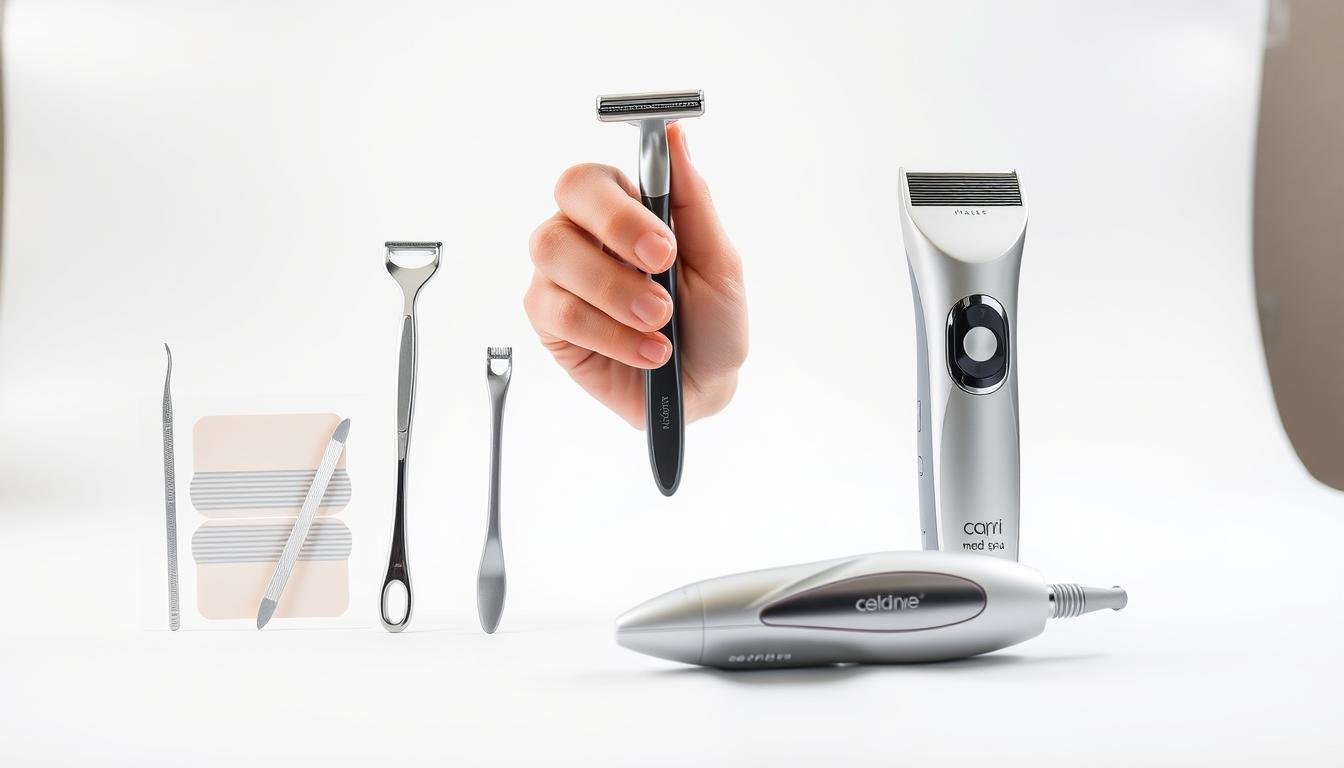Many Americans choose to remove their pubic hair for personal grooming. In 2019, about 28.05 million people used at-home hair removal products. Tweezing seems like a cheap way to manage pubic hair, but it has health risks.
Some people pluck their pubic hair to stay hair-free for up to 6 weeks. But is this good for your health? The choice of hair removal method affects your comfort and wellbeing.
The skin in the pubic area needs extra care when removing hair. Plucking can cause irritation, ingrown hairs, and infections. For painless hair removal, consider Soprano Titanium laser treatments at Capri Med Spa.
Key Takeaways
- Plucking pubic hair can provide up to 6 weeks of hair-free results but comes with health risks
- The pain from tweezing can be significant due to the sensitivity of the pubic region
- Ingrown hairs and infections are common complications from plucking pubic hair
- Laser hair removal offers longer-lasting results with fewer side effects than tweezing
- Pubic hair serves natural protective functions worth considering before complete removal
- Professional treatments like Soprano Titanium provide safer alternatives to at-home plucking
- Pubic hair health concerns should guide your choice of removal method
Understanding Pubic Hair: Its Purpose and Function
Pubic hair has many biological functions that people often overlook. The purpose of pubic hair goes beyond looks, playing key roles in protection and health. Despite over 80 percent of women and about 50 percent of men grooming regularly, knowing its natural functions is key.
The Natural Protection Pubic Hair Provides
Natural pubic hair acts as a shield against irritants and pathogens. It keeps the genital area at the right temperature and reduces friction. This helps prevent skin irritation and lowers the risk of infections.
It also keeps moisture away from the skin, creating a good environment for genital bacteria. Despite common beliefs, hair removal treatments don’t improve hygiene. Our bodies evolved with pubic hair for important reasons.
Evolutionary Significance of Pubic Hair
Pubic hair has an evolutionary role in sexual signaling and pheromone retention. These hairs appear during puberty, signaling readiness for reproduction. They help pheromones last longer, influencing attraction.
Our bodies evolved with pubic hair for protection and biological signaling. While grooming is a personal choice, understanding its natural purpose helps us make choices that balance aesthetics with health considerations.
Cultural Perspectives on Pubic Hair Maintenance
Views on pubic hair vary across cultures and history. Ancient Egyptians removed all body hair for cleanliness, while others celebrated natural growth. Today, about 60 percent of women have gone completely bare, reflecting Western beauty standards.
Grooming choices are deeply personal. Nearly 60 percent of both men and women groom for hygiene, despite dermatologists finding no medical benefit. Knowing the natural functions of pubic hair helps make grooming choices based on accurate information, not just cultural pressures.
Is It Bad to Pluck All Your Pubic Hairs?
Plucking pubic hair might seem easy at home, but experts say it’s not good for the whole area. The hair follicles are very dense here, making plucking very slow. It can take hours to get rid of all the hair.
The pubic hair plucking risks are more than just time wasted. It’s also very painful compared to other methods. When you pull out hairs, it can cause inflammation and itching that lasts for days.
Using the wrong technique can lead to ingrown hairs. These are painful red bumps where hairs curl back into the skin. They can get infected, causing more problems.
Plucking too often might even make hair grow back faster. Also, using dirty tweezers can lead to infections like folliculitis or scarring. This is very serious in such a sensitive area.
Is plucking pubic hair dangerous? It’s not deadly, but it can cause long-term issues. For safer options, try laser hair removal. It’s more effective and doesn’t hurt as much as plucking.
Potential Health Risks of Pubic Hair Plucking
Plucking might seem like a precise way to remove unwanted pubic hair. But, this method carries several health concerns that many people overlook. The sensitive skin in the pubic region needs special care to prevent complications.
Infection and Folliculitis Concerns
Each time you pluck a hair, you create a tiny opening in the skin. These openings are perfect for bacteria to enter, raising the risk of infection. Signs include redness, warmth, swelling, and painful bumps that may contain pus.
Folliculitis from plucking occurs when hair follicles become inflamed. This creates red, itchy bumps that resemble pimples.

Ingrown Hairs and Skin Irritation
Plucking dramatically increases the chance of developing ingrown pubic hairs. This is more common for those with curly or coarse hair. Ingrown hairs occur when removed hair grows back and curls into the skin instead of emerging from the surface.
Ingrown hairs can last for months if hair removal continues. They cause persistent discomfort and may lead to scarring.
Home treatment options include applying warm compresses and temporarily stopping hair removal. For severe cases, a doctor may prescribe antibiotic ointments or oral medication.
Microscopic Tears and STI Risk
The tiny tears created during plucking can increase vulnerability to certain sexually transmitted infections. Plucking removes a natural barrier and creates small wounds. This makes it easier for pathogens to penetrate.
Studies suggest a link between aggressive pubic hair removal and increased risk for infections like molluscum contagiosum.
For those seeking hair removal without these risks, professional treatments like laser hair removal offer safer alternatives. Specialized facilities use advanced technologies that remove hair without damaging the skin’s protective barrier.
Psychological Aspects of Pubic Hair Removal
Deciding about our pubic hair is more than just grooming. It shows how we see ourselves and how we fit in with others. About 3.5% of people pull their hair compulsively, with 2-5% focusing on pubic hair.
Body Image and Social Pressure
What we think about our pubic hair is shaped by media and friends. Women with PCOS, for example, feel worse about themselves because of too much hair. More women than men struggle with pulling their hair, showing how society affects our choices.
Finding Personal Comfort vs. Following Trends
It’s hard to know if we’re doing what we want or what others expect. Pubic grooming has been around for thousands of years, seen as clean. Today, many choose to keep their natural hair as a sign of self-acceptance. Ask yourself: does this choice make you happy, or are you trying to please others?
Communicating Preferences with Partners
Talking openly about pubic hair with your partner can make your relationship stronger. It’s about being honest and understanding each other. Here’s how to do it right:
- Choose a calm time to talk, not when you’re intimate
- Speak clearly and without judgment
- Listen to your partner without getting defensive
- Be open to finding a middle ground
Remember, the emotional side of choosing how to groom your pubic hair is important. Only about 30% of those with hair-pulling disorders get help, often because of shame. Your choices should be made with care, not because of what others think.
Common Mistakes When Plucking Pubic Hair
Many people choose to tweeze their pubic area, despite the risks. Studies show 62% of women have removed all their pubic hair at least once. They often do this without knowing the right techniques. Knowing the common mistakes can help avoid harm.
Using unsterilized tweezers is one of the most dangerous practices. It increases the risk of infection, which is high in this sensitive area. Always clean your tools with rubbing alcohol before each use.
Pulling against the hair grain causes pain and skin trauma. The right way to pluck is to gently pull in the direction of hair growth. This reduces the chance of breakage and irritation.
- Trying to dig out partially broken hairs damages follicles and skin
- Plucking too many hairs at once overwhelms sensitive skin
- Tweezing ingrown hairs can lead to scarring and infection
- Neglecting aftercare increases risk of folliculitis
Certain areas need extra caution or should be avoided when plucking. The skin around vaginal openings, near moles, and around nipples should never be tweezed. This is because they are very sensitive and at high risk of infection.
Even with the right technique, plucking takes a lot of time. It may also cause uncomfortable ingrown hairs. For safer, less painful options, consider professional treatments like laser hair removal. Med spas offer this with cooling effects for a better experience.
Safer Alternatives to Plucking for Pubic Hair Removal
Are you looking for ways to remove pubic hair that are less painful? There are safer options than plucking that work well. Trimming is the gentlest, needing regular touch-ups but avoiding irritation and ingrown hairs.

Shaving is quick, taking half the time of plucking, but hair grows back fast. Use a clean, sharp razor with shaving cream to avoid cuts and irritation. Waxing is initially painful but removes hair from the root, keeping skin smooth for 3-4 weeks.
For longer-lasting results, professional laser treatments offer the best hair removal with minimal discomfort. Advanced technologies like Soprano Titanium provide painless treatments with cooling effects, making them perfect for sensitive areas.
- Depilatory creams work without pain but may cause chemical irritation
- Sugaring offers a natural alternative to waxing with less skin trauma
- Home IPL devices provide cost-effective professional-style treatments
When picking safe pubic hair removal methods, think about your skin sensitivity, budget, and what you want. Professional laser treatments need sessions every 6-8 weeks but last the longest. Always take good care of your skin after, with gentle exfoliation and moisturizing to prevent ingrown hairs.
Modern Solutions: Advanced Laser Hair Removal Technologies
The world of hair removal has changed a lot with new technologies. Now, there are safe and effective ways to remove hair for good. Laser hair removal is a top choice for those tired of plucking, shaving, or waxing.
How Soprano Titanium Technology Works
Soprano Titanium is at the forefront of hair removal science. It uses light to target hair follicles. The light is absorbed by the hair’s melanin, turning into heat that stops the follicle without harming the skin.
This tech is special because it works on all skin types, even darker ones. Older lasers struggled with these skin tones.
Benefits of Painless Laser Treatment with Cooling Effects
Soprano Titanium’s biggest feature is its cooling system. This makes hair removal painless. It’s unlike older lasers that could sting.
The cooling effect keeps the skin comfortable. This means you can treat sensitive areas without pain. A survey found 95% of patients felt little to no pain during treatments.
Expected Results and Treatment Timeline at Specialized Med Spas
At specialized med spas, you’ll need 6-8 sessions for best results. These sessions are 4-6 weeks apart. This matches hair growth cycles for full treatment.
Studies show up to 90% permanent hair reduction after a full series. You’ll start to see hair thinning after the second or third session.
- 70% of clients report satisfaction with results after completing treatment
- 80% experience significant reduction in ingrown hairs
- Treatment sessions typically last 15-30 minutes depending on the area
- Maintenance sessions may be needed annually for some individuals
How to Care for Your Intimate Area Post Hair Removal
Proper care after hair removal is key to avoiding discomfort and complications. The skin in your intimate area is very sensitive. It needs extra care after any hair removal.
Start by cleaning the area with lukewarm water and pat it dry gently. Avoid harsh soaps that can irritate the skin. Use a soothing, alcohol-free product to reduce redness and discomfort.
Wear loose-fitting cotton underwear for 24-48 hours to let the skin breathe. Stay away from hot baths, swimming pools, saunas, and intense workouts for at least 24 hours after treatment.
Once the initial sensitivity goes away (usually 2-3 days post-treatment), gentle exfoliation is important. This helps prevent ingrown hairs, which affect up to 80% of people who remove pubic hair.
- Apply a cool compress if experiencing discomfort
- Use aloe vera gel for its soothing properties
- Moisturize with fragrance-free products
- Exfoliate gently 2-3 days after treatment
- Watch for signs of infection like increased pain or pus
Laser treatments at places like Capri Med Spa need minimal aftercare. Their Soprano Titanium technology with cooling effects reduces irritation. This makes aftercare easier than with traditional methods.
| Removal Method | Key Aftercare Needs | Duration of Special Care |
|---|---|---|
| Shaving | Moisturize daily, change razor blades after 5-7 uses | 1-2 days |
| Waxing | Avoid heat, tight clothing, exfoliate after 48 hours | 3-5 days |
| Laser (Soprano Titanium) | Sun protection, gentle cleansing | 1-3 days |
Conclusion: Making Informed Choices About Pubic Hair Management
Choosing how to manage your pubic hair is very personal. We’ve seen both good and bad sides of each method. It’s key to think about them carefully.
Pubic hair plucking might seem easy, but it’s risky. It can lead to infections and ingrown hairs. These are serious issues to avoid.
Your choices about pubic hair should focus on what feels right for you. If you want something more permanent, try the Soprano Titanium laser at Capri Med Spa. It’s painless and works well.
By choosing wisely, you can take care of your intimate area in a way that suits you. This makes you feel in control and confident.
FAQ
What is the purpose and function of pubic hair?
Pubic hair acts as a natural shield against bacteria and friction. It also helps retain pheromones, which are important for sexual signaling. Throughout history, different cultures have viewed and managed pubic hair in unique ways.
Is it bad to pluck all of your pubic hair?
Plucking might seem easy and cheap, but it’s not always the best choice for the whole pubic area. There are several health reasons for this.
What are the possible health risks of plucking pubic hair?
Plucking can lead to open pores that might get infected, causing folliculitis. It also raises the risk of ingrown hairs and microscopic tears. These can make you more susceptible to sexually transmitted infections.
How do social norms and expectations influence pubic hair removal decisions?
Media and social norms have shaped what we think about pubic hair, mainly for women. This can affect how we feel about ourselves. It’s key to think if our grooming choices are truly our own or if we’re influenced by others.
What are common mistakes people make when plucking pubic hair?
People often make mistakes like using dirty tools or pulling against the grain. Trying to remove too many hairs at once or pulling out broken hairs is also risky. These actions can lead to bad outcomes.
What are safer alternatives to plucking for pubic hair removal?
Safer options include shaving, trimming, waxing, sugaring, and using depilatory creams. Professional laser hair removal is also a good choice. Each method has its own pros and cons, like cost, pain, and how long the results last.
What are the benefits of modern laser hair removal technologies?
New laser hair removal systems, like Soprano Titanium, target hair follicles safely. They offer a painless treatment with cooling technology. Specialized med spas can give you long-lasting results with little aftercare needed.
How should you care for the pubic area after hair removal?
After removing hair, it’s important to take good care of your skin. Use soothing products right away and exfoliate regularly to avoid ingrown hairs. Watch for signs of infection that might need medical help.


